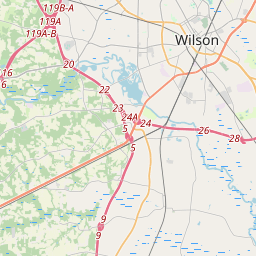Wilson County Civil War Memorial
Historical marker location:






April 12, 1861: The Civil War begins with the Confederate attack on Fort Sumter, located in South Carolina's Charleston Harbor.
April 15, 1861: President Abraham Lincoln issues a call for 75,000 volunteers to serve in the Union Army to suppress the rebellion.
May 24, 1861: The first major land battle, known as the First Battle of Bull Run (or First Battle of Manassas), takes place in Virginia. It ends in Confederate victory.
September 17, 1862: The Battle of Antietam in Maryland becomes the bloodiest single-day battle in American history, with heavy casualties on both sides. The Union forces, commanded by General George McClellan, manage to halt Confederate General Robert E. Lee's advance into Union territory.
January 1, 1863: President Lincoln issues the Emancipation Proclamation, declaring that all slaves in Confederate-held territories are to be set free. However, the proclamation does not immediately free all slaves in the United States.
July 1-3, 1863: The Battle of Gettysburg in Pennsylvania takes place, resulting in a significant Union victory and inflicting heavy casualties on Confederate forces. It marks a turning point in the war.
November 19, 1863: President Lincoln delivers the Gettysburg Address, emphasizing the principles of liberty, equality, and the preservation of the Union.
April 9, 1865: General Robert E. Lee surrenders to Union General Ulysses S. Grant at Appomattox Court House in Virginia, effectively ending the Civil War.
April 14, 1865: President Lincoln is assassinated by John Wilkes Booth while attending a play at Ford's Theatre in Washington, D.C.
May 10, 1865: Confederate President Jefferson Davis is captured, signaling the collapse of the Confederate government.
December 6, 1865: The Thirteenth Amendment to the United States Constitution is ratified, officially abolishing slavery throughout the country.
While this timeline provides an overview of key events, it is important to note that the Civil War spanned over four years, from 1861 to 1865, and encompassed numerous battles, campaigns, and political developments that shaped the course of American history.
The city of Durham, North Carolina, is home to the world-renowned Duke University and Duke Medical Center, as well as several other prestigious colleges and universities.
During the American Revolution, Wilson County played a significant role as a center of patriotic sentiment and support for the cause of independence. Many local residents joined the colonial militia and fought against British forces. The area saw several skirmishes and raids, including the infamous Battle of Raft Swamp in neighboring Cumberland County.
The county was officially established in 1855 and was named after General Louis D. Wilson, who served as a state legislator and fought during the Mexican-American War. The economy of Wilson County thrived in the late 19th and early 20th centuries, primarily based on agriculture and the tobacco industry. The introduction of the railroad in the late 1800s further boosted economic growth and allowed for easier transportation of goods.
In the mid-20th century, Wilson County experienced significant changes as technology and industries evolved. The decline of the tobacco industry led to diversification of the local economy, with the manufacturing sector becoming more prominent. Today, Wilson County is a vibrant community known for its agricultural heritage, industrial development, and commitment to education and healthcare. It continues to grow and adapt to the changing times while preserving its historical roots.
Wilson County Timeline
This timeline provides a glimpse into the major events and milestones that have shaped the history of Wilson County, North Carolina.
- 1740 - Wilson County is established as part of Johnston County.
- 1855 - Wilson County is officially formed and named after Louis D. Wilson, a state legislator and general in the Confederate Army.
- 1856 - The town of Wilson is incorporated.
- 1865-1868 - Wilson County recovers from the devastation caused by the Civil War.
- 1886 - The Wilson Cotton Mills is established, leading to the growth of the textile industry in the county.
- 1908 - The Atlantic Coast Line Railroad is completed, connecting Wilson to other major cities.
- 1950s-1960s - Wilson County experiences significant population growth and economic expansion.
- 1985 - The Vollis Simpson Whirligig Park is established, showcasing unique kinetic sculptures.
- 1990 - Wilson County celebrates its bicentennial.
- 2019 - The Wilson County Public Library opens its new main branch.